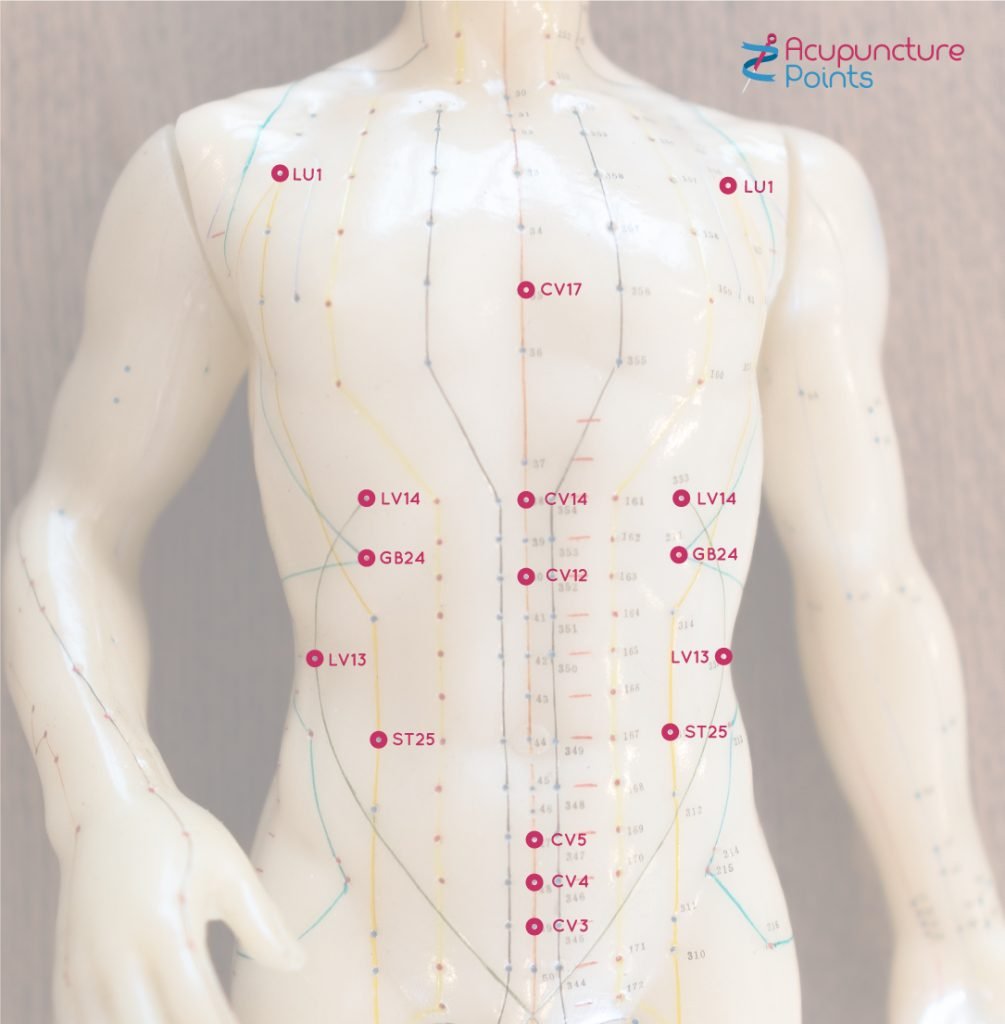
Heart and Kidney Yang deficiency
With Heart and Kidney Yang deficiency, you’ve overstressed your body’s ability to recover from over-exertion and cold.

Alarm? All these so-called acupuncture alarm points lie on the front or side of the torso.
If sore to pressure they may indicate a problem with the corresponding zang-fu organ. By a problem, we don’t necessarily mean a major problem: for example if your Lung Alarm point is sore to pressure, it could just mean you have a respiratory infection – a cold perhaps.
| Lung | Zhongfu | Lung 1 | Bladder | Zhongji | Ren-3 |
| Large Intestine | Tianshu | Stomach-25 | Kidney | Jingmen | GB-25 |
| Stomach | Zhongwan | Ren-12 | Pericardium | Shanzhong | Ren-17 |
| Spleen | Zhangmen | Liver 13 | Sanjiao | Shimen | Ren-5 |
| Heart | Juque | Ren-14 | Gall Bladder | Riyue | GB-24 |
| Small Intestine | Guanyuan | Ren-4 | Liver | Qimen | Liver 14 |

Sometimes, as with all acupuncture points whose positions are delineated in the literature, the position of the actual point may be slightly different. You have to search for it, and confirmation comes when you feel the position, even if the patient doesn’t, or the patient confirms it by responding accordingly – sometimes loudly!

Stay in Touch!
No spam, only notifications about new articles and updates.

Book a Video consultation if you want to know more about your symptoms

With Heart and Kidney Yang deficiency, you’ve overstressed your body’s ability to recover from over-exertion and cold.

Why You get Nervous Stomach Anxiety and How to Handle It. Acupuncture has great ways to help.
Subscribe to the Newsletter
If you are interested in understanding how Traditional Chinese Medicine can improve your life sign up to my newsletter for the latest updates.
Subscribe to the Newsletter
If you are interested in understanding how Traditional Chinese Medicine can improve your life sign up to my newsletter for the latest updates.